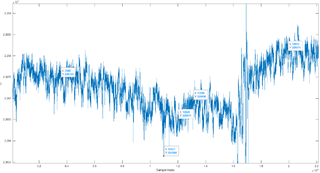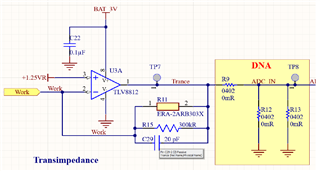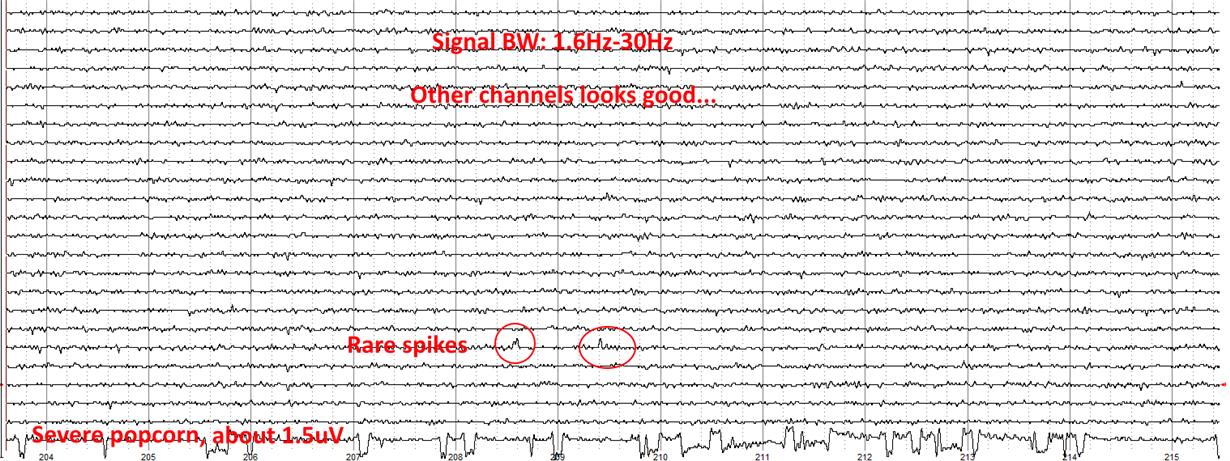Other Parts Discussed in Thread: REF3312, TLV2333
Hi Team,
A customer is asking if there is a way to remove the noise they are measuring below:

Their application is a low-power device that needs measurement of current in the nano ampers resolution. The TLV8812 is used as a trans-impedance amplifier, with a feedback resistor of 909K ohm and a feedback capacitor is 1uF.
In the image above, they are measuring drifts, as a very slow wave, similar to a sine, in the frequency of 5mHz (milli Hz), with an amplitude of up to 300uV. This is measured with a fixed resistor and a fixed voltage (1.25V from ref3312) in the input.

At the output, the final circuit is a low pass RC filter, with 150K ohm and 1uF
How do they eliminate this?
Thank you in advance.
Regards,
Marvin



